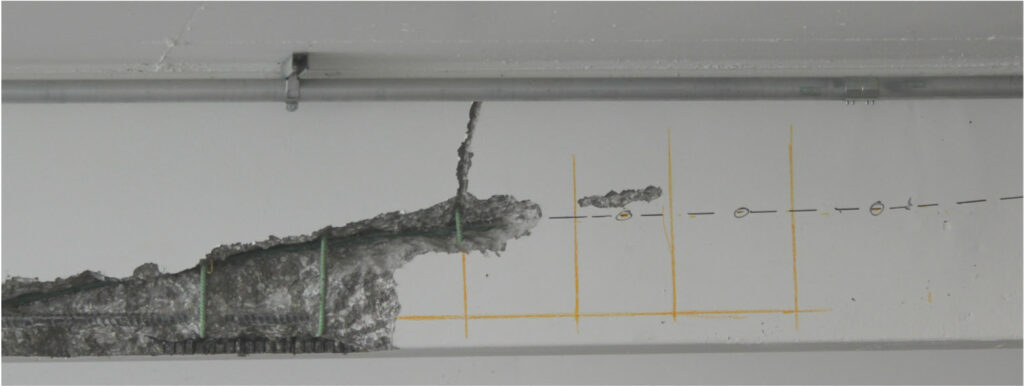Discovering the Secret Benefits of Concrete Scanning in Construction Projects
In the world of modern construction techniques, the usage of concrete scanning innovation has actually arised as a pivotal device for guaranteeing project performance and structural integrity. From boosting safety steps to precisely detecting utilities hidden beneath the surface, the advantages of concrete scanning are complex. The capacity to simplify project timelines and minimize expenses while preserving existing frameworks is a testimony to the worth this technology gives the building and construction market. As we look into the nuanced advantages of concrete scanning, it comes to be noticeable that its influence prolongs much beyond surface-level evaluations, using a look right into the complex web of benefits waiting to be discovered.
Enhanced Precaution
Using advanced concrete scanning technology enhances precaution on construction websites by providing accurate detection of possible risks hidden beneath the surface area. This modern technology enables building groups to determine rebar, channels, post-tension wires, and various other blockages before excavation or boring, considerably reducing the danger of crashes. By pinpointing these components exactly, employees can stay clear of destructive vital structural elements, hence avoiding injuries, delays, and pricey repair services.
In addition, concrete scanning plays an essential role in ensuring the stability of existing frameworks during improvements or growths. By identifying weak points, spaces, or damage within concrete aspects, designers can resolve these concerns proactively, enhancing the total safety and security and longevity of the structure. This positive method not just minimizes the threat of architectural failings yet also minimizes the possibility for accidents triggered by unanticipated structural deficiencies.
Fundamentally, the application of concrete scanning technology works as an aggressive security measure that safeguards both construction workers and the architectural stability of buildings, ultimately adding to the total success and performance of building projects. - RainierGPR Concrete Scanning
Accurate Discovery of Energies
Concrete scanning modern technology assists in precise recognition of below ground energies, boosting building website safety and security and performance. Exact detection of utilities is crucial in construction jobs to avoid pricey problems, job hold-ups, and most notably, guarantee the safety of employees and the public. By using advanced scanning modern technologies such as ground-penetrating radar (GPR) and electro-magnetic induction, building teams can draw up the location of buried pipelines, cables, and other utilities with high levels of accuracy.

Time and Expense Effectiveness

Concrete scanning modern technology allows Find Out More building teams to properly find rebar, post-tension cable televisions, and other ingrained things within concrete frameworks. This exact information assists in avoiding expensive mistakes such as unexpected damage to critical aspects throughout drilling, cutting, or coring activities. Additionally, by recognizing possible dangers ahead of time, the demand for costly repairs or remodel because of damages can be lessened, causing set you back financial savings for the job.

Additionally, the capability to swiftly and properly identify energies underneath the surface area without causing any type of damage not just conserves time however also prevents pricey disturbances to existing facilities. On the whole, the moment and cost performance advantages of concrete scanning make it a vital device for enhancing construction job administration and implementation.
Preservation of Architectural Honesty
Maintaining the architectural honesty of structures and facilities is extremely important in ensuring long-lasting stability and safety and security. Concrete scanning plays a critical function in this conservation procedure by allowing building and construction experts to determine prospective dangers to the architectural integrity of a building or infrastructure prior to they escalate right into major concerns. Through using sophisticated scanning modern technologies such as ground-penetrating radar (GPR) and electro-magnetic induction, building and construction teams can non-invasively assess the condition of concrete frameworks, situate rebar, post-tension cords, and other embedded components, and recognize any spaces, fractures, or degeneration within the concrete.
Improved Project Planning
In order to guarantee the effective implementation of building tasks, precise focus to detail and detailed preparation are important components that stem from an extensive understanding of the structural problems recognized through concrete scanning. Ultimately, incorporating concrete scanning into the job preparation phase improves sychronisation among group participants, promotes helpful hints proactive problem-solving, and adds to the successful shipment of building and construction jobs within budget plan and routine constraints.
Verdict
In final thought, concrete scanning uses many advantages in construction projects. By enhancing precaution, properly identifying utilities, enhancing time and price efficiency, preserving architectural stability, and assisting in job preparation, concrete scanning shows to be a crucial device for effective project implementation. Its capability to reduce risks, boost efficiency, and make certain job honesty makes it an important possession for building and construction professionals.
In the world of modern-day construction methods, the utilization of concrete scanning technology has actually arised as an essential tool for making sure task performance and structural honesty.Concrete scanning innovation enables construction teams to accurately situate rebar, post-tension cords, and other ingrained things within concrete frameworks. Through the usage of innovative scanning technologies such as ground-penetrating radar (GPR) and electromagnetic induction, construction groups can non-invasively evaluate the condition of concrete frameworks, find rebar, post-tension cables, and various other embedded components, and determine any kind of voids, cracks, or this hyperlink deterioration within the concrete.
In order to ensure the successful execution of building and construction tasks, thorough interest to information and thorough planning are essential elements that stem from a detailed understanding of the architectural problems determined through concrete scanning. Inevitably, including concrete scanning into the task planning phase improves sychronisation amongst group participants, cultivates proactive problem-solving, and contributes to the successful distribution of construction tasks within budget and routine constraints.